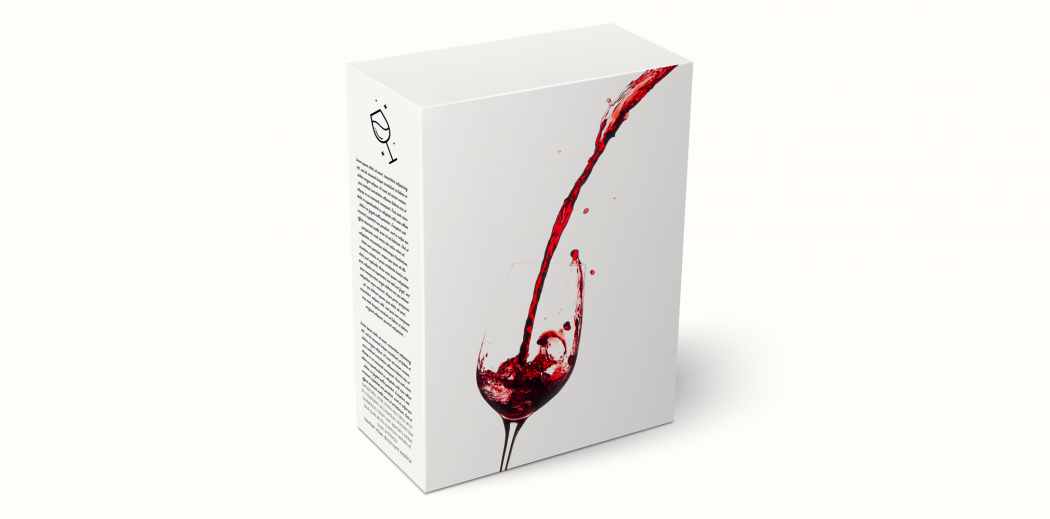The game of Slap the Bag is confoundingly simple. Its only requirements are a 3-liter box of wine with a plastic bladder and a group of willing drinkers. And it’s a game that has helped introduce a generation of college-aged Americans to the world of wine (yikes) and has given Franzia (we’re assuming) a healthy share of sales.
But when I asked Eva, my Norwegian second-cousin who lives in Oslo, if she had heard of Slap the Bag, she had no idea what I was talking about.
The reason she wasn’t familiar with this game, I later learned, wasn’t due to a lack of boxed wine in her country, but rather due to a proliferation of it. In Norway and Sweden, boxed wines are so commonplace, they have no place in mind-numbing drinking games. And they’re certainly not simple storage containers for cloyingly sweet white Zinfandel appealing to the tastes of ‘90s parents and new-to-wine 20-year-olds. They’re normal, everyday containers for normal, everyday wines. In fact, the 3-liter box is the vessel of choice for more than half of all wine sales in both Norway and Sweden and about 40 percent of wine sales in Finland.
It may be difficult to imagine a society as sophisticated as these twisting a spigot rather than upturning a classic bottle every second time a glass is poured, but that’s only because we live in a country where Slap the Bag is a reality. So, why does boxed wine take up half the shelf space in Scandinavia?
The Price is Right
When I messaged Eva to ask if she and her friends drink boxed wine in Norway, she sent a laughing emoji. “We do!” she wrote back. “It’s cheaper and lasts longer than from a bottle. Wine is expensive here.” Not unlike here in the United States, boxed wine presents a more affordable option for casual, everyday wine drinkers in Scandinavia, a group that’s on the rise. But in Sweden, Norway and Finland, the average bottle of wine is about $12, which doesn’t sound terribly expensive until compared to the U.S., where 75 percent of wines cost less than $9.
That Convenient Handle
It’s not just a question of price, although that does probably play the most significant role, according to Magnus Reuterdahl, wine writer for two Swedish lifestyle publications, DinVinguide.se and Dryckeslistan.se. In the land that brought us the most efficient furniture on the planet, buying boxed wine just makes sense in many cases. Perhaps Swedes don’t care about old-world charm as other countries do. More likely, though, Reuterdahl told me in an email, it’s also about the ease of transport – and who doesn’t agree that it’s more convenient to carry a box of wine and keep it for days on end, rather than schlep home the four-bottle equivalent and risk letting some go to waste.
It could be, too, that in ever-practical Scandinavia, wine drinkers prefer to drink their wines rather than save them in a dusty basement. A New York Times article from 2008 sums up the practicality of boxed wines: “boxes are perfect for table wines that don’t need to age, which is to say, all but a relative handful of the top wines from around the world.”
Design Doesn’t Hurt
Beyond price and convenience, Reuterdahl told me it’s also the “relatively stylish design” that’s attracting customers to boxed wines in Sweden. Leave it to the Swedes to perfect practical-yet-beautiful designs for wine packaging – designs that make a difference, at least for millennials, who care about cool labels just about as much as they care about quality.
The Earth Matters
In Sweden and Norway, where wine drinkers are purchasing more sustainable and organic wines, the appeal of more sustainable packaging may also be a factor. Studies have shown that boxed wine is far more environmentally friendly than bottles, and that’s extra appealing in two of the most sustainable countries in the world. Though it may not be at the top of consumers’ minds when buying wine, environmentally-friendly practices are built into the business strategies at the region’s government-run alcohol chains: Systembolaget in Sweden, Vinmonopolet in Norway, and Arko in Finland. Systembolaget, for example, practically wrote sustainable packaging into its 2016 launch plan: “Our products, together with the materials and services we buy in, shall be manufactured under conditions that are favourable for both people and the environment.” It’s no wonder, then, that more shelf space is reserved for boxes at these Nordic monopolies.
A Sense of Adventure is Key
The availability of Earth-friendly boxed wine has an impact, but it’s thanks to the willingness of consumers to purchase wine in non-traditional packaging that this trend and others might see so much success. According to a post by top Swedish wine importer, Oenoforos, “Many important wine producers today regard Sweden as a trend-setter among wine-drinking countries and are happy to test new products on us.” Sweden leads the way in Scandinavia with its openness to experimenting to the new and different in wine, including a taste for New World wines. Norway follows this experimental trend when it comes to packaging, but lags in its acceptance of New World varietals. In Finland, where vodka still makes up a quarter of all alcohol consumption, wine consumption is on the rise and 40 percent of that is sold in boxes, not bottles.
Boxes are the Gateway to Wine
The consumption of boxed wine in Scandinavia is hard to dispute. But what is the impact?
Reuterdahl believes boxed wines are part of the reason wine – including bottled, premium wine – has become more popular in countries like Sweden. Even though, he admits, most of the wine packaged in boxes can be “quite boring,” it’s this trend that might be opening up drinkers in the Nordic region to wine in general. As Reuterdahl told me in an email, “[bag-in-box wines] may have some part in the growing interest for wine and information about wine, as a starting point.”









Wine in a box?
Is that like cigars in a bottle?